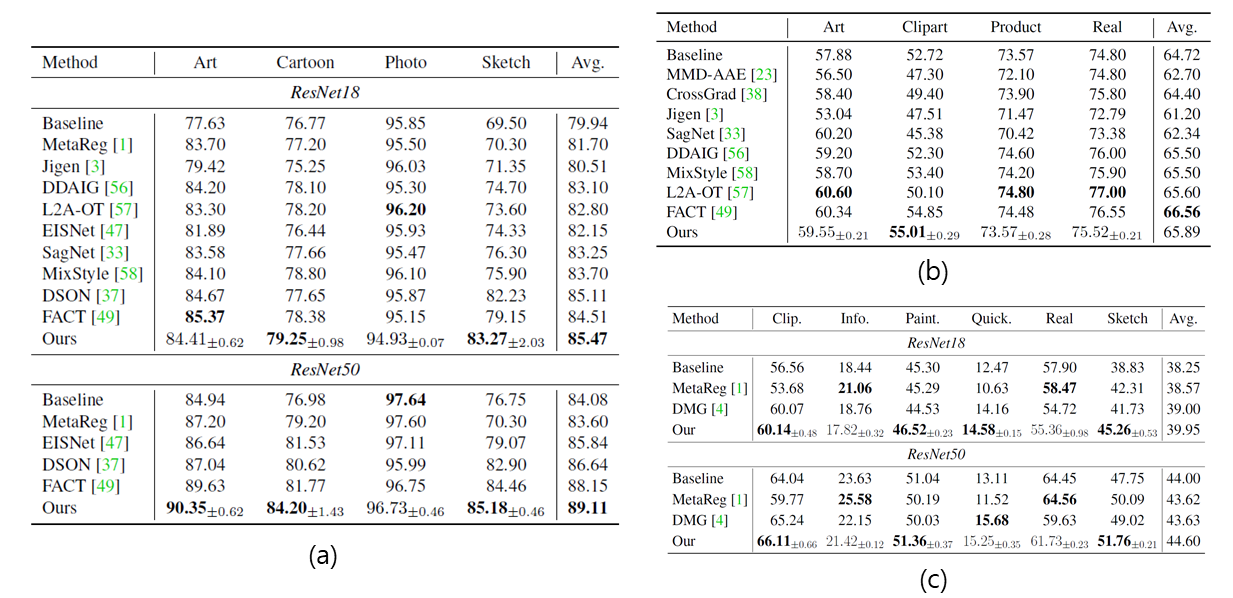Abstract
This paper studies domain generalization via domain-invariant representation learning. Existing methods in this direction suppose that a domain can be characterized by styles of its images, and train a network using style-augmented data so that the network is not biased to par-ticular style distributions. However, these methods are restricted to a finite set of styles since they obtain styles for augmentation from a fixed set of external images or by interpolating those of training data. To address this limitation and maximize the benefit of style augmentation, we propose a new method that synthesizes novel styles constantly during training. Our method manages multiple queues to store styles that have been observed so far, and synthesizes novel styles whose distribution is distinct from the distribution of styles in the queues. The style synthesis process is formulated as a monotone submodular optimization, thus can be conducted efficiently by a greedy algorithm. Extensive experiments on four public benchmarks demonstrate that the proposed method is capable of achieving state-of-the-art domain generalization performance.

Figure 1. The motivation of our method. We improve the generalization ability of a model by adaptively synthesizing novel styles that are distinct not only from source domain styles but also from those synthesized previously, then injecting them into training data for learning style-invariant representation.

